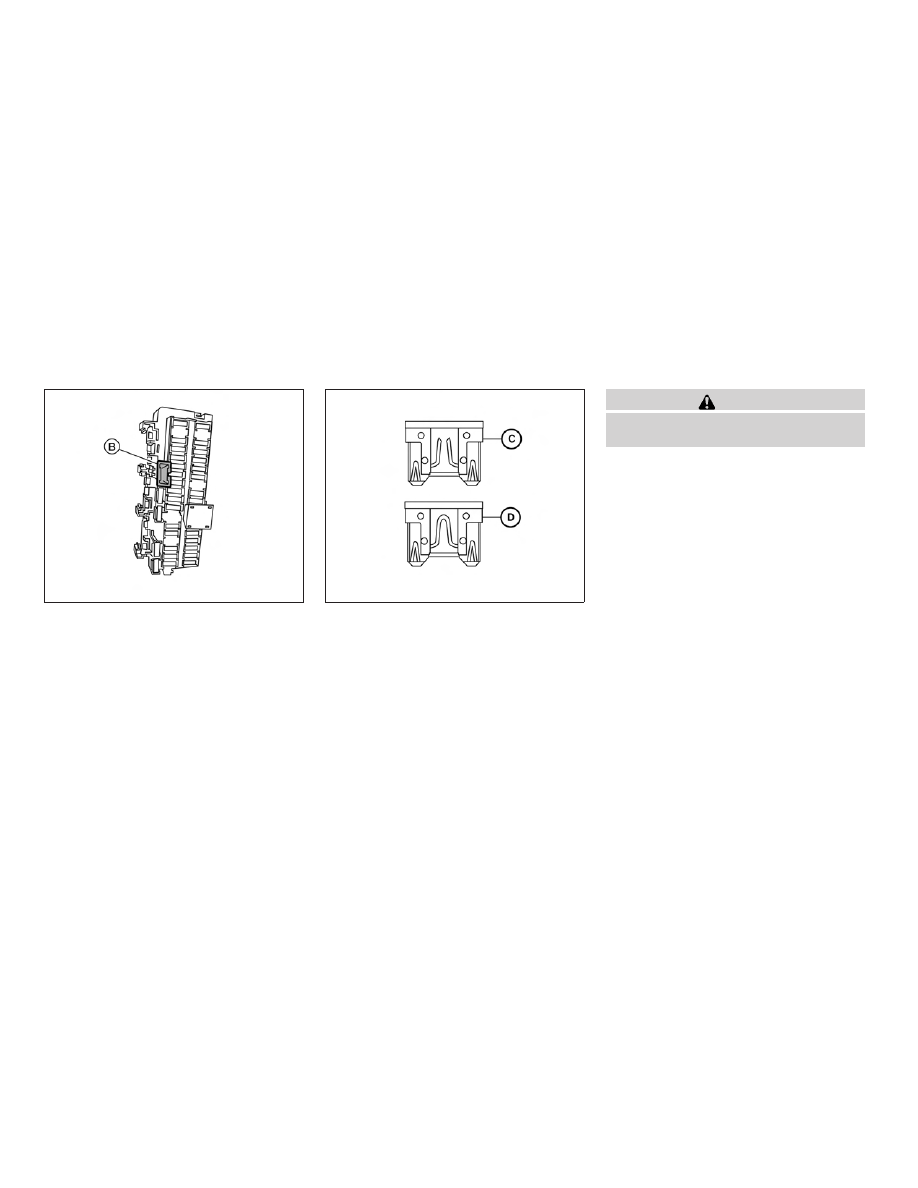Nissan Murano Hybrid (2016 year). Instruction - part 24

4. Remove the fuse with the fuse puller
䊊
B
.
5. If the fuse is open
䊊
C
, replace it with an
equivalent good fuse
䊊
D
.
6. Push the fuse box cover to install.
If a new fuse also opens, have the electrical
system checked and repaired. It is recommended
you visit a NISSAN dealer for this service.
CAUTION
Be careful not to allow children to swallow
the battery or removed parts.
LDI2902
LDI2713
BATTERY REPLACEMENT
8-26
Maintenance and do-it-yourself